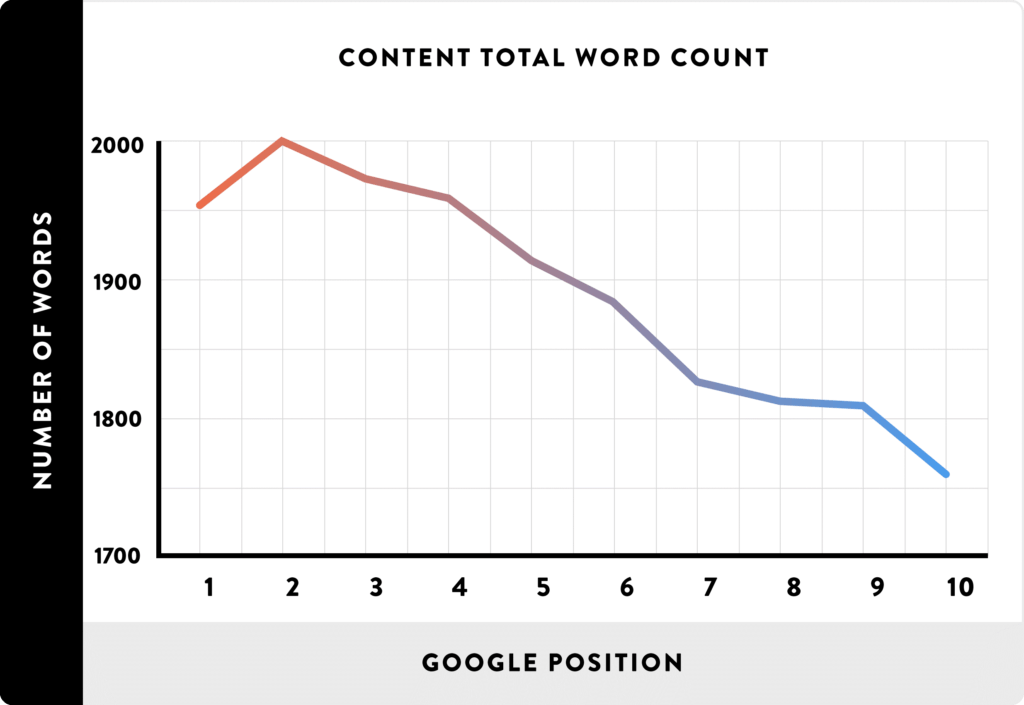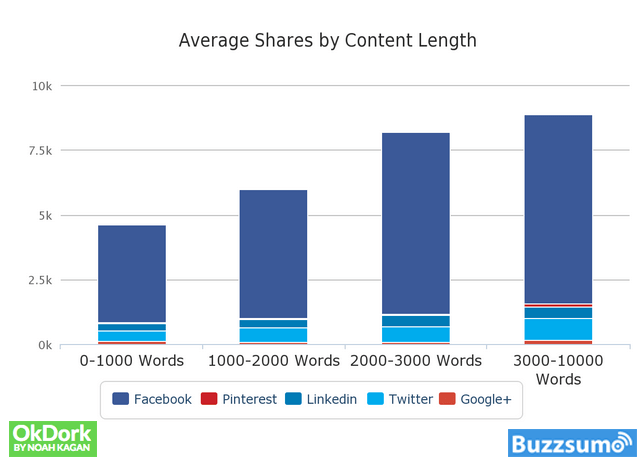Marketers tend to focus on short-form content like social media posts, infographics, and small blog posts. Many assume that consumers are just too busy to read more than a few sentences. Contrary to this belief, data shows that consumers appreciate long-form content that solves problems and provides value. In fact, long-form content (such as detailed blog posts, eBooks, and guides) has been shown to out-perform shorter material in several key areas. Discover how your organization can benefit from long-form content and learn the steps to make it happen.
The Advantages of Long-Form Content
When consumers look to enhance their knowledge and skill set, they don’t turn to a 500-word blog post. They look for content that’s thoroughly researched, well-composed, and packed with valuable tips and tricks. To qualify as long-form, most experts agree it must be at least 1,000 words. Over time, you can expect to see the following benefits from long-form content:
SEO
Google’s algorithm is constantly updated. Hardly anyone knows exactly how it works, but there are a few methods for improving search engine results page (SERP) rankings. One way is producing long-form content, which consistently outperforms short-form content in SERPs. In fact, Backlinko discovered that the average word count for first-page results is 1,890 words.

Image credit: Backlinko.com
Experts can’t be sure why longer content performs better, but there are a few possibilities:
- Google inherently prefers long-form content
- More detailed content gives Google a better view of topical relevancy
- More social sharing of long-form content
- Longer content contains more valuable information
One thing is clear: Long-form content has a significantly higher chance of landing on the top results page.
Social Shares & Engagement
Across the most popular social media platforms, long-form content is shared most frequently on average. In fact, a 2017 study by Buzzsumo and OkDork showed that content between 3,000 and 10,000 words gets the highest average shares.

Image credit: OkDork
The data shows that social media users are more likely to share long-form content with significant takeaways. To improve social engagement, try promoting valuable material like guides, eBooks, and detailed blog posts.
Thought Leadership
Producing long-form content is an excellent way to demonstrate industry expertise. Consider two of the leading inbound marketing authorities: HubSpot and Moz. Both brands consistently publish long-form content that affirms their inbound marketing expertise. They thoroughly discuss trends and techniques but also provide original research and insights. By producing long-form content, both brands establish trust with consumers and other industry leaders.
Bottom line: Consumers are more likely to make purchases from and engage with trusted brands that offer valuable, comprehensive information.
Inbound Links
For most organizations, earning quality inbound links is a struggle. One of the better ways to attract links is by publishing and promoting comprehensive material. Short-form content is rarely valuable enough to earn links, but long-form provides extensive resources. HubSpot recently conducted a study of their own blog posts and discovered an interesting correlation between word count and external links. They found that, on average, content with a word count of over 2,500 earned the most links.

Image credit: Hubspot
Moz also performed a study with nearly 500,000 text-based articles. They found a significant increase in inbound links for content over 1,000 words.
It’s difficult to make direct correlations, but the data has consistently demonstrated that long-form content garners more inbound links.
Creating Great Long-Form Content
From brainstorming ideas to optimizing for SEO, creating long-form content is a time-consuming process. Marketers must carefully choose a topic, style, and format that fits their audience. Considering the time and energy spent creating long-form content, it also needs to be relevant for years to come. To get started, keep these steps in mind:
1) Find a Writer
If you have the resources to produce content internally, select a team member with subject matter experience and excellent writing skills. You can also hire a freelancer on platforms like nDash, which connects organizations with experienced writers. If you choose to hire a freelancer, be prepared to pay top rates for high-quality content.
2) Make Content Goals
Before you get to work, sit down and think about your content’s purpose. Consider the metrics you’ll track (engagement rates, page views, conversions, etc.) and a reasonable goal for each. Also, consider your audience and buyer personas, noting which stage of the buyer’s journey you want to target.

3) Pick a Topic
The most successful long-form content is what marketers call evergreen content. It’s, essentially, content that remains relevant for years. An article on January’s top social media trends would not be considered evergreen. Brainstorm topic ideas that have the potential to perform well for years to come. Here are a few suggestions to get inspired:
- Old material: Look at your top-performing posts for topic ideas. You could also repurpose your older blog posts to create a long-form article or eBook.
- Keyword research: With your buyer persona in mind, think of 10-15 keywords they’re likely to search for. You can then use tools such as Google’s Keyword Planner to determine search volume and competition.
- Quora & Reddit: Search within your industry to see the questions and concerns your audience has. Pay close attention to the phrasing used.
- Your Competition: Survey the topics and formats that work for your competition.
Pick a Format
When choosing a format, consider how your audience interacts with brands. Be prepared to have several buyer personas with different format preferences. Using tools like Buzzsumo, you can find which formats are most successful for your competition. Consider Buffer’s top-performing formats for evergreen content:
- How-To Posts
- Resource List of Curated Content
- Informational Posts & Ultimate Guides
- Industry FAQ Answers
Gated vs. Ungated
Whether or not to gate will be dependent on your goals. If you’re looking for leads, exchange contact information for access to your content. For brand awareness, page views, and engagement, leave content ungated for easy access.
Content Promotion
Too often, organizations post content to their website alone and grumble about mediocre results. To really see benefits, you need a content promotion strategy. This could include sharing your content on social media channels, reaching out to influencers and industry leaders, or using e-mail marketing techniques.
Get Started!
As you can see, long-form content offers many benefits ranging from higher SERP rankings to greater social engagement. Don’t have the time or resources to create long-form content? Connect with an experienced freelancer on nDash today.
 Editor’s note: This post is by nDash community member Jessica Turner. Jessica is a freelance writer and content marketer with a background in digital marketing in tech and politics. To learn more about Jessica, or to have her write for your brand, check out her nDash profile page.
Editor’s note: This post is by nDash community member Jessica Turner. Jessica is a freelance writer and content marketer with a background in digital marketing in tech and politics. To learn more about Jessica, or to have her write for your brand, check out her nDash profile page.
